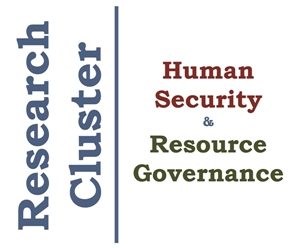
David MacDonald, University of Guelph
Three weeks ago, the Canadian Museum for Human Rights acknowledged the existence of genocide in Canada. In a tweet, they called the Indian Residential Schools system a violation of the United Nations Genocide Convention.
The final report on the National Inquiry into Missing and Murdered Indigenous Women and Girls took that acknowledgement several steps further. The report documents how Canada has committed and continues to commit colonial genocide through a range of composite acts.
In 2015, the final report of the Truth and Reconciliation Commission brought attention to “cultural genocide.” I recently published The Sleeping Giant Awakens, a book on the Indian Residential system and genocide. In my book, I outline how it was outside the TRC’s limited post-judicial mandate to conclude with a finding of genocide. Although TRC Chair Murray Sinclair approached his legal team to see if genocide could be inserted in the final report, his lawyers advised against it. However, survivors have made widespread use of the term to help to translate their devastating experiences.
The MMIWG report was not bound by a restrictive mandate and has gone much further in articulating a case for the entire history and present of Canada constituting genocide. The report cites the Second World War human rights lawyer Raphael Lemkin’s view that genocide consists of a “co-ordinated plan of different actions aiming at the destruction of essential foundations of the life of national groups, with the aim of annihilating the groups themselves.”
The MMIWG inquiry effectively used their political space to make calls to justice, not only for Indigenous women and girls but also larger calls to prevent the ongoing genocide of Indigenous peoples. Rather than genocide as a series of historical events, the inquiry appeals to the present.
With the Organization of American States involved in an investigation, there is now international focus on this issue.
Up until recently, my field of political science has paid little attention to these issues. Political scientists have generally not engaged with the dispossession and subjugation of Indigenous peoples and how that dispossession was foundational to Canada’s current political order.
Once we take in the MMIWG report, our discipline cannot ignore genocide because genocide is foundational to Canada.
Investigating genocide and the state
Only one other inquiry in a western settler state found that the state committed genocide against Indigenous peoples. The first was 22 years ago in Australia when the Australian Human Rights Commission argued that genocide had been committed in the forcible transfer of Aboriginal children from their families and communities, what became known as the “stolen generations.”
What is entirely unprecedented is a sitting head of government admitting to the ongoing genocide. Canadian Prime Minister Justin Trudeau pursued a strategy markedly different from that of former Australian prime minister John Howard. Now that Trudeau has accepted the findings of the inquiry, we will wait to see how this will play out.
Although some political scientists may disagree with the inquiry’s conclusion, they should not ignore the conclusion of genocide because it is easier to do so. If some political scientists don’t agree with the label of genocide, then what sort of terms might we use to advance the conversation? And what are the political implications of those other terms, such as crime against humanity?
The American political scientist Robert Dahl described how “stateness” is necessary for the pillars of democracy: electoral rights, political liberties, the rule of law and social rights. Stateness includes basic agreements about the legitimacy of state borders, institutions, rules of government, and the use of force.
For many Indigenous peoples, Canada has severe stateness problems. The state asserts sovereignty and territorial control when it does not have the law on its side, while continuing to break treaties on treaty lands and exercising power on unceded lands.
But most political scientists do not see stateness issues as central to Canadian politics. Instead they often to look at Canadian institutions as natural constructions and neutral arenas for competition between legitimate actors.
Understanding historic violence
To study settler colonial systems, political scientists need to recognize their historical context and the violence involved in their maintenance and perpetuation. These colonial systems replaced Indigenous governance systems which were often ideally suited to the peoples and territories on which they developed over millennia.
Once genocide against Indigenous peoples is factored into the analysis, how do we understand electoral and political institutional reform? What does reconciliation after or during genocide mean? What does this mean for how we study territory, political institutions, the courts, elite decision-making, foreign policy, economic policy, national identity, regional identity, biculturalism?
What does it mean to welcome refugees and new immigrants to “integrate” into a state which has been committing genocide since the 19th century?
These systems were not designed to provide fairness or justice to Indigenous nations; they were instead designed to destroy the political agency of Indigenous peoples while also destroying them as peoples, communities and families.
For too long we political scientists in Canada have been bystanders to discussions about cultural genocide and genocide. The excuse previously is that we didn’t know and we didn’t have the means to fully comprehend what this means. Now that we know, what will we do?
In 2016, the Canadian Political Science Association put together a reconciliation committee to address the TRC’s 94 Calls to Action. They will now have even more to consider. I look forward to seeing how these conversations evolve.
David MacDonald, Professor of Political Science and Research Leadership Chair for the College of Social and Applied Human Sciences, University of Guelph
This article is republished from The Conversation under a Creative Commons license. Read the original article.
